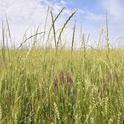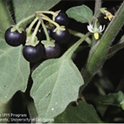I Need More Help!
Request assistance using the IT Help System*.
*Non-ANR personnel should contact their local coordinator or site administrator for assistance.
Combined Blog Sample
Spotlight
-

-

Creative weed management approaches using forage crops
In my previous position as the Extension Dryland Cropping Systems Specialist with the University of Nebraska Panhandle Research and Extension Center in Scottsbluff, I focused my research efforts on intensifying and diversifying the winter...
-

How Much Fruit is Up there?
Old crop, new crop. What's up there in the trees? Are they big enough to sell? Is there a good set for next year? These are questions every avocado grower has every year, and often all year long. What is up there in the...
-

Silverleaf nightshade in young pistachio orchards
Silverleaf nightshade, Solanum Elaeagnifolium, is perennial weed that is native to South America, Mexico, American Southwest and Southern States. This herbaceous and woody summer weed belongs to Solanaceae just like other weeds such as black nightshade...
-
Oh Woes, in a Wet Year - Anthracnose
So rain is great………as long as it doesn't cause problems like increased iron chlorosis, root rot, snails, erosion, too many weeds, etc., etc., etc, And now we are seeing more anthracnose. This disease is not normally much of a problem...
blog sample
-

-

Creative weed management approaches using forage crops
In my previous position as the Extension Dryland Cropping Systems Specialist with the University of Nebraska Panhandle Research and Extension Center in Scottsbluff, I focused my research efforts on intensifying and diversifying the winter...
-

How Much Fruit is Up there?
Old crop, new crop. What's up there in the trees? Are they big enough to sell? Is there a good set for next year? These are questions every avocado grower has every year, and often all year long. What is up there in the...
-

Silverleaf nightshade in young pistachio orchards
Silverleaf nightshade, Solanum Elaeagnifolium, is perennial weed that is native to South America, Mexico, American Southwest and Southern States. This herbaceous and woody summer weed belongs to Solanaceae just like other weeds such as black nightshade...
-
Oh Woes, in a Wet Year - Anthracnose
So rain is great………as long as it doesn't cause problems like increased iron chlorosis, root rot, snails, erosion, too many weeds, etc., etc., etc, And now we are seeing more anthracnose. This disease is not normally much of a problem...
Combined Blogs
-

-

Creative weed management approaches using forage crops
In my previous position as the Extension Dryland Cropping Systems Specialist with the University of Nebraska Panhandle Research and Extension Center in Scottsbluff, I focused my research efforts on intensifying and diversifying the winter...
-

How Much Fruit is Up there?
Old crop, new crop. What's up there in the trees? Are they big enough to sell? Is there a good set for next year? These are questions every avocado grower has every year, and often all year long. What is up there in the...
-

Silverleaf nightshade in young pistachio orchards
Silverleaf nightshade, Solanum Elaeagnifolium, is perennial weed that is native to South America, Mexico, American Southwest and Southern States. This herbaceous and woody summer weed belongs to Solanaceae just like other weeds such as black nightshade...
-
Oh Woes, in a Wet Year - Anthracnose
So rain is great………as long as it doesn't cause problems like increased iron chlorosis, root rot, snails, erosion, too many weeds, etc., etc., etc, And now we are seeing more anthracnose. This disease is not normally much of a problem...
